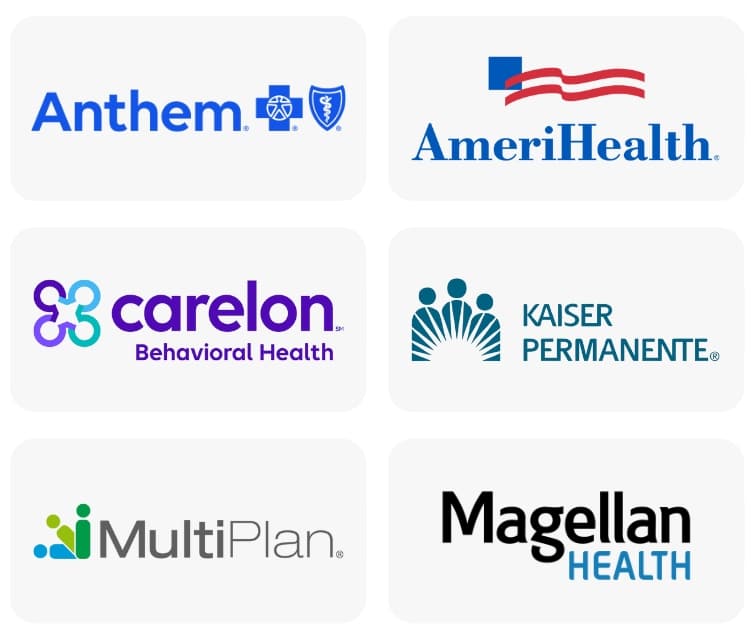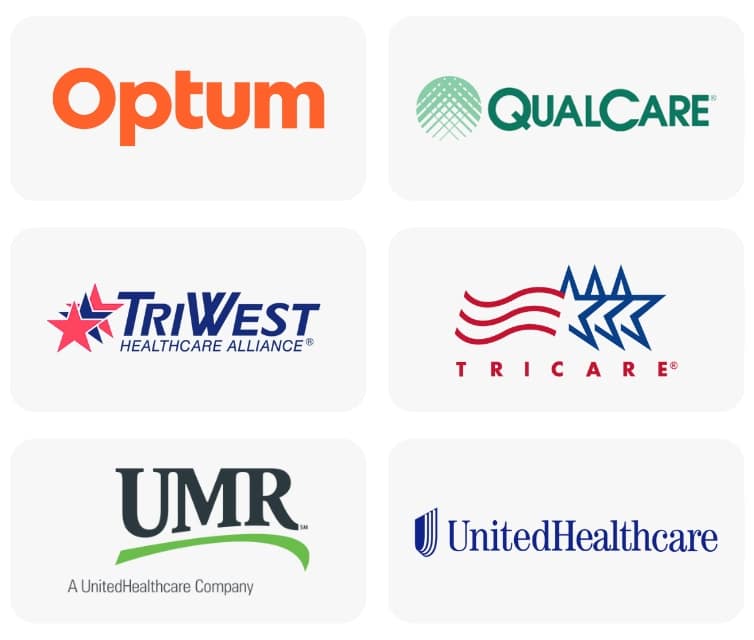Skip To Section
The Surgeon General reports that 20.8 million people (nearly 8% of the total population) meet the criteria for a substance use disorder, but these people can’t be lumped into one group. Substance abuse doesn’t discriminate against age, race demographics, or socioeconomic status. All populations are at risk for addiction.
Substance abuse remains a rampant problem in modern society. Unfortunately, many people don’t get the help they need.
The first solution lies in education. It’s essential to understand the risk factors that can cause addiction. This knowledge can promote awareness. Awareness can help challenge the stigma associated with drug or alcohol abuse.

Drug Use By Gender
Both genders have unique issues when it comes to addiction.
Men typically have higher rates of alcohol, tobacco, or illicit substance dependence. They are more likely to use almost all types of illegal substances. Some research suggests this gap between men and women is closing, especially among adolescents. Men also have higher rates of overdose and visits to the emergency room.
But women are certainly not immune. Compared to men, women typically begin using drugs at a younger age. They also tend to self-medicate more frequently, and they develop addictions more quickly. Of the two groups, women are more likely to relapse than men.
When it comes to seeking professional treatment, men are more likely to receive care than women. There are many reasons for this difference, but a couple are that:
- Women may have family or parenting obligations that they cannot leave behind.
- They may be pregnant and worried about telling people they are using drugs.
In treatment, 21.7% of young women aged 12 to 17 indicate alcohol as their primary substance of abuse compared to 10.5% of young men. However, young men are more likely to indicate abusing marijuana. In older populations (65 and up), women are three times more likely to seek treatment for abusing prescription pain relievers than men.
Addiction and Age
About 4% of adolescents have a substance use disorder. The younger someone is when they begin using drugs, the more likely they are to develop addiction problems later in life.
This may happen for a few reasons:
- Drug use can have harmful, lasting impacts on developing brains
- Early risk factors, like trauma, mental illness, or family problems, may exacerbate the likelihood for developing addiction.
Many people think addiction is a young person’s problem, but research shows that 25% of all prescribed medications are given to older patients. It’s estimated that the number of adults over age 50 who need substance use treatment will increase 300% from 2000 to 2020.
Self-Assessment: Am I Addicted?
"*" indicates required fields
Contact Form
Would you like help?
"*" indicates required fields
Drug Use By Race
The 2018 National Survey on Drug Use and Health breaks down the rates of substance use disorders by race:
- 4.8% of Asian Americans
- 6.9% of Black or African Americans
- 7.1% of Hispanic or Latinos
- 7.7% of Whites
- 9.3% of Native Hawaiian and Other Pacific Islanders
- 10.1% of Native American or Alaskan Natives
It is impossible to tell whether these numbers vary due to genes, culture, or both, but when it comes to substance use, it’s crucial to acknowledge the role of institutional racism and societal expectations.
As mentioned, most people don’t receive the treatment they need for addiction. Unfortunately, racial disparities exist in all forms of healthcare. Minority populations tend to be less likely to receive substance use treatment.
For example, one study found that minority patients receiving buprenorphine were more likely to leave treatment than white patients. Another found that Black and Hispanic youth were less likely to receive treatment than whites.
Drug Use By Religion
Research shows that religion can protect against addiction. People with religious beliefs may be less likely to use drugs or drink in the first place. But research on this relationship is limited. For example, shame often prevents people from talking about their struggles with addiction. They may worry about being judged or pushed out of their religious community.
Many support groups and treatment programs incorporate spirituality. For example, 12-step groups encourage people to believe in a higher power. They also often talk about prayer and acceptance. These concepts can be extremely helpful for people recovering from addiction.
Some groups may be more susceptible to addiction, but the disease does not discriminate. If you are struggling, it’s important to reach out for help, no matter who you are or what your situation is. At Footprints to Recovery, we are here for you 24/7. Contact us today to learn how we can support you.
Addiction and Socioeconomic Status
Socioeconomic status (SES) is your social standing, and it’s usually a combination of income and occupation and education. It appears to play a role in addiction. For example, young adults in wealthier families are the most likely to use alcohol and marijuana. Experimentation starts early, and this can set young children up for abuse. Well-to-do children also have few financial barriers, so they usually don’t have to worry about affording drugs or alcohol.
In lower classes, drugs may be more readily accessible. For example, children may encounter drug deals while just walking to school.
Additionally, lower SES is associated with higher levels of stress. Chronic stress is a risk factor for almost all mental illnesses. That means poorer populations may be more susceptible to addiction.
Of course, socioeconomic status also plays a role in recovery. People with a lower SES may have a harder time accessing the care they need. They may not have health insurance. They might also not have the option to stop or cut back on working in order to attend treatment.
Addiction and Mental Illness
In a given year, over 18% of adults have suffered from a mental illness. These illnesses may include:
- Depression
- Anxiety
- Bipolar disorder
About half of people who have a mental illness also experience a substance use disorder and vice versa. Many people use drugs or alcohol to self-medicate mental health symptoms.
It’s unclear if substance abuse “causes” mental illness or vice versa. Instead, most experts agree that the two conditions share many risk factors.
Barriers to Addiction Treatment
The demand for substance use disorder (SUD) treatment is rising rapidly due to the ongoing opioid epidemic and the Affordable Care Act’s mandate to address substance use disorders. However, this growing demand is not being matched by adequate access to or availability of treatment services, creating a significant gap in care.
According to research, common barriers to accessing substance use disorder treatment include:
- Eligibility Barriers: Determining eligibility for SUD treatment presents several challenges. Common issues include the time and resources required to assess eligibility, unclear eligibility criteria, and difficulties in determining whether a person qualifies for treatment. These obstacles prevent many individuals from accessing the care they need.
- Treatment Capacity Barriers: Limited treatment capacity remains a major issue in the substance use treatment field. Time and resources are often wasted on evaluating capacity, and facilities that operate below capacity experience financial losses. This restricts the availability of treatment for those seeking help.
- Provider Knowledge and Awareness: Many healthcare providers lack proper education about substance use disorder treatments and available options. Treatment options are often missing from online directories, making it harder for providers to refer patients. Additionally, inconsistent terminology and a lack of standardized guidelines create confusion about treatment pathways.
- Communication Barriers: Inefficient communication systems lead to longer patient wait times—despite the fact that patients need treatment immediately. A lack of coordination and communication technology between treatment centers also makes it difficult to track whether patients receive the care they were referred to.
Addressing the Barriers to Addiction Treatment
Addressing the barriers to treatment is essential to improving access to substance use disorder treatment. At Footprints to Recovery, we aim to provide streamlined eligibility processes and expand treatment capacity across several states. Our substance abuse treatment providers are all educated on the highest quality approaches and maintain ongoing communication between treatment centers to ensure patients can access the care they urgently need.
Our programs strive to close these nationwide gaps in care and meet the growing demand for SUD treatment and help individuals on their path to recovery.
Accessing Quality Addiction Treatment
If you or a loved one is struggling with substance abuse, know that you are not alone. Our team at Footprints to Recovery is dedicated to helping those in need find the support and resources necessary to overcome addiction. For help and more information, please contact us about our treatment options.
Don’t wait any longer, take the first step towards a healthier and happier future today with Footprints to Recovery. We are here for you every step of the way.
- Addiction and Substance Misuse Reports and Publications | HHS.gov
- Gender Differences in Addiction: Clinical Implications
- Sex and Gender Differences in Substance Use | National Institute on Drug Abuse (NIDA)
- The TEDS Report: Gender Differences in Primary Substance of Abuse across Age Groups
- Key Substance Use and Mental Health Indicators in the United States: Results from the 2017 National Survey on Drug Use and Health
- Access to Addiction Services Differs by Race and Gender – NIDA
- Gaps in the Substance Use Disorder Treatment Referral Process: Provider Perceptions – PMC
Our admissions team is available 24/7 to listen to your story and help you get started with the next steps.



